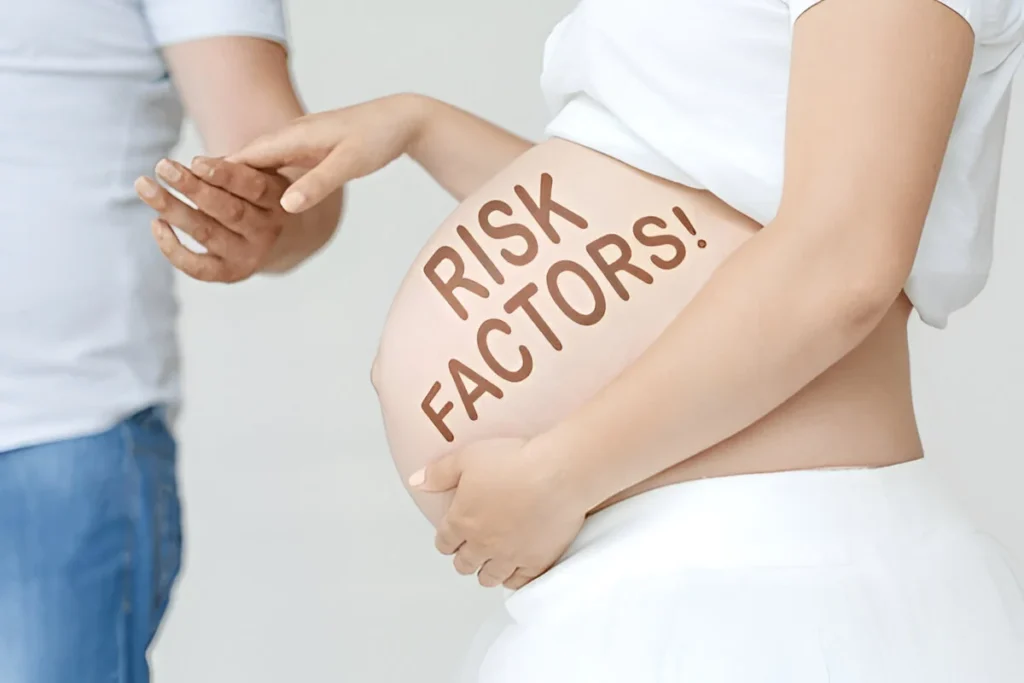-
Ganesh Talkies, Kolkata
Ganesh Talkies, Kolkata

High risk pregnancy can pose serious challenges. Learn the warning signs early and ensure maternal and fetal health with expert guidance form a reputed gynecologist.
Pregnancy is an exciting and transformative journey, but it is essential to recognize that not every pregnancy progresses without complications. Certain pregnancies are classified as high risk pregnancy, meaning there are factors that may affect the health of the mother, the baby, or both. Awareness of the warning signs is crucial for timely intervention and care.
Many women may not realize that early detection of complications can significantly reduce risks. By understanding what to watch for, expectant mothers can take proactive steps to protect themselves and their babies.

A high risk pregnancy occurs when medical or physical factors increase the likelihood of complications. These factors can include:
Identifying a high risk pregnancy early allows healthcare providers to monitor the mother and baby more closely, potentially preventing serious complications.
Recognizing the warning signs early is key. Here are some of the most critical indicators:
While mild cramping is common during pregnancy, persistent or severe abdominal pain may indicate problems such as:
If the pain is intense or accompanied by bleeding, immediate medical attention is essential.
Light spotting can occur naturally, but heavy or continuous bleeding should not be ignored. It may signal:
Early evaluation can prevent complications and ensure safety.
Swelling in the hands, face, or legs is common, but sudden or severe swelling can be a warning sign of:
Monitoring blood pressure and urinary protein levels is crucial in such cases.
A fever above 100.4°F during pregnancy can be concerning. Potential risks include:
Prompt medical care and safe medication can help manage infections effectively.
Persistent headaches or vision disturbances such as blurred vision, flashing lights, or spots may indicate:
Monitoring blood pressure and regular check-ups are essential for high risk pregnancies.
A noticeable reduction in fetal movements after the 20th week of pregnancy can signal fetal distress. Expectant mothers are encouraged to:
Preterm labor can occur before 37 weeks and may present as:
Early detection can allow interventions that prolong pregnancy and improve neonatal outcomes.

While warning signs alert mothers to immediate concerns, certain risk factors predispose pregnancies to complications:
Being aware of these factors helps women take preventive measures and seek timely medical support.
Proper management can reduce complications significantly. Steps include:
Engaging with the best lady gynecologist in Kolkata ensures personalized care and guidance through a high risk pregnancy.

A pregnancy is high risk if maternal, fetal, or environmental factors increase the likelihood of complications. These include chronic illnesses, multiple pregnancies, or maternal age extremes.
Yes, adopting a balanced diet, avoiding alcohol or smoking, staying hydrated, and following medical advice can significantly reduce risks.
Typically, high risk pregnancies require more frequent visits, sometimes every 2–3 weeks or as recommended by a specialist.
While not all preterm labor can be prevented, early detection of risk factors, proper monitoring, and timely medical interventions can greatly improve outcomes.
Contact your gynecologist if you experience severe abdominal pain, heavy bleeding, decreased fetal movements, high fever, or sudden swelling.
By understanding and responding to warning signs, women can enjoy a healthier pregnancy experience while minimizing risks.
High risk pregnancies require heightened awareness, regular check-ups, and prompt action when warning signs appear. Educating yourself about potential complications, maintaining a healthy lifestyle, and seeking expert guidance can make a significant difference in outcomes. With proper care, even high risk pregnancies can progress safely, ensuring both maternal and fetal well-being.